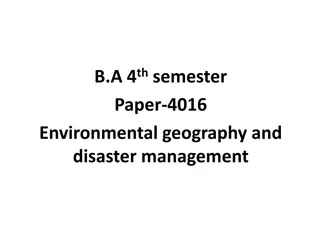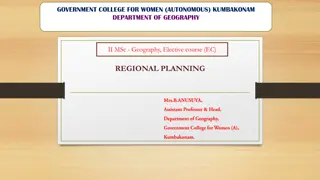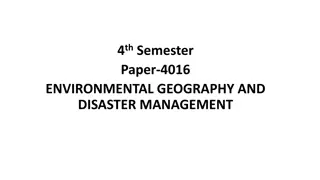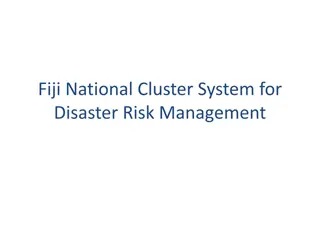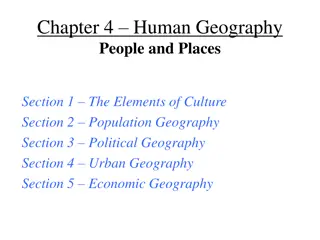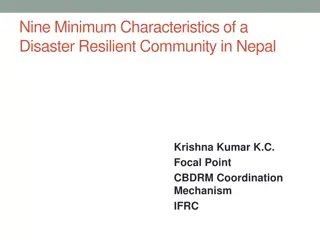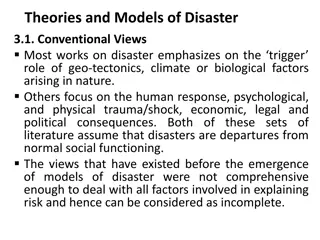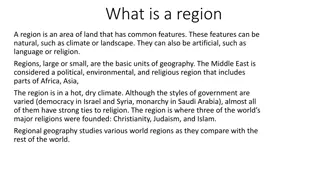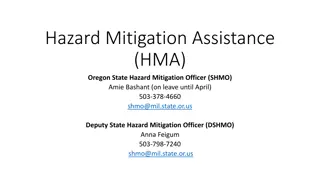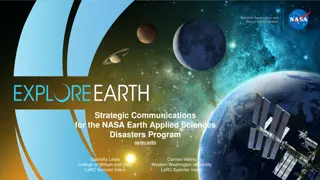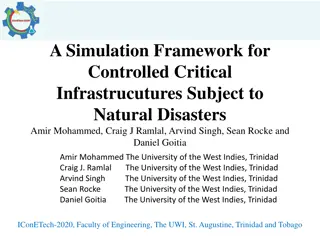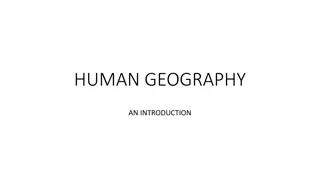Understanding Environmental Geography and Disaster Management in B.A. 4th Semester
Environmental geography encompasses the study of ecosystems, temporal changes, global environmental issues, human impacts, degradation, and more. It examines human-nature interactions and spatial dynamics, providing essential tools for assessing environmental impacts and management strategies.
Download Presentation

Please find below an Image/Link to download the presentation.
The content on the website is provided AS IS for your information and personal use only. It may not be sold, licensed, or shared on other websites without obtaining consent from the author. Download presentation by click this link. If you encounter any issues during the download, it is possible that the publisher has removed the file from their server.
E N D
Presentation Transcript
B.A 4thsemester Paper-4016 Environmental geography and disaster management
ENVIRONMENTAL GEOGRAPHY:SCOPE The scope of the study of environmental geography may be grouped into 9 major subfields. The geoecosystem or simply ecosystem as study unit-ecosystem is the basic ecological unit for the study of various aspects of environmental geography. Ecosystem functioning: the functioning of ecosystem including circulation of energy and matter and ecosystem productivity
Temporal changes in ecosystem:evolution of plants and animals and ecological succession Ecological changes in space: it refers primarily to spatial changes in the distribution of plants and animals in the world. Global environmental problem:it include those problems which are caused mainly by anthropogenic processes. Environmental hazards and disasters: that include both natural and anthropogenic hazards and disasters
Man and environmental processes:these are significant aspects of environmental geography becaused increased human economic activities have enormously modified different environmental processes which have upset the natural ecosystem. Environmental degradation and pollution Environmental management: it is the most significant aspect of environmental geography
Scope of environ- mental geography Source:Environmental Geography,Savindra sing
Significance of Environmental Geography Environmental geography as a branch of geography studies about the spatial aspects of interactions between humans and the natural world. It requires an understanding of the dynamics of climatology, hydrology, biogeography, geology and geomorphology, as well as the ways in which human societies can understand the environment.
Environmental geography represents a critically important set of analytical tools for assessing the impact of human presence on the environment by measuring the result of human activity on natural landforms and cycles. It is concerned with the spatial attributes of all the phenomena related to the environment, environmental issues, resources and management It includes the study of various biomes and human influences on them
Geography with ecological perspective can study man-environment relationship, identify environmental problems, It studies about the cause- effect, severity, management and mitigation of various environment issues like Climate change, global warming, ozone depletion, habitat loss, bio- diversity loss, pollution etc. Includes the notion of sustainable development, environment education,conservation and management.
It helps in formulating economically and socially sound environmental planning and management plans for the conservation of natural and ecological resources. Bibliography-Environmental Geography by Savindra Singh Brainly.in Environmental Geography by Saxena Onlinelibrary.wiley.com wikipedia


